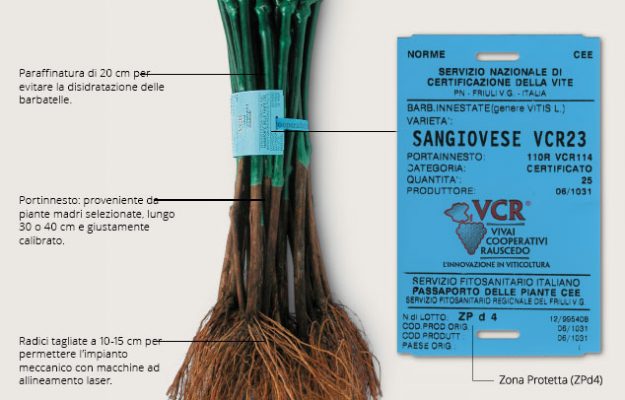The state of the art in the world of wine is not only illustrated by production figures - which show a net drop in production in the three major European countries - and trade figures - which paint a picture of strong recovery after a year and a half of pandemic and difficulties - but also by the trends coming from the nursery sector, because tomorrow’s vineyards are born from the vine shoots that animate the market today. A privileged point of view, in this case, is that of Rauscedo Cooperative Nurseries, a leader in Italy and Europe, which, as its general manager Eugenio Sartori tells WineNews, after a difficult year has seen an increase in “the tendency of winegrowers to renew or expand (within the 1% limit set by European regulations) their plantings. They are focusing mainly on varieties such as Primitivo, Glera (which covers 6,500 hectares of Prosecco), Vermentino, but also international varieties - Merlot, Cabernet Sauvignon, Cabernet Franc and Syrah - and Pinot Grigio, which has made a comeback after a year of substantial standstill”.
The vine shoot market is therefore once again becoming dynamic, partly as a direct result of the production and commercial situation: “We will be placing a much larger quantity than last year: the campaign that has just ended stopped at 37 million plants marketed in Italy, but in this one”, says Sartori, “they will be 15% more, and at higher prices, because all nursery products have increased, from paraffin to plastic film and irrigation systems, as well as other products for viticulture, from poles to wires. As for Italy, there is a very good market demand in Portugal, what we have produced is already in place, as well as in Spain, while in France, there will only be a problem of financial availability of producers most affected by the frosts, but we are talking about 6 million vine shoots. In Eastern countries the situation is stable, in Romania and Bulgaria a lot will depend on the CMO wine aid and therefore on the projects presented and assigned, with the positive exception of Macedonia, which has come from years in which very little was planted”.
All in all, there is a certain optimism, which is also the result of the economic recovery and wine consumption, which will lead to “a total of 75 million vine shoots sold worldwide, a market that is almost divided in half, with 44% from abroad and 56% from Italy, and which relies heavily on innovation, from the 14 resistant varieties created with the University of Udine - with Merlot, Cabernet Sauvignon, Friulano, Pinot Nero and Pinot Bianco as parents - to the “M” rootstocks (M1, M2, M3, M4) created by the University of Milan and conveyed through Winegraft (Ferrari, Zonin, Banfi, Armani Albino, Cantina Due Palme, Claudio Quarta Vignaiolo, Bertani Domains, Nettuno Castellare, Cantine Settesoli, together with Fondazione di Venezia and Bioverde Trentino, under the coordination of Professor Scienza, ed.), a combination that best responds to the challenges of climate change”, concludes the general manager of Vivai Cooperativi Rauscedo, Eugenio Sartori.
Innovation will soon have another arrow in its bow, the “VCR-Research Center”, which will be inaugurated on October 1: the vernissage will be followed by the conference 'Towards a new agriculture: The vernissage will be followed by the conference 'Towards a new agriculture: the role of genetics and nursery gardening', which will touch on fundamental points for tomorrow’s viticulture, from genome editing and the prejudices of science, with Professor Attilio Scienza of Viticulture at the University of Milan, to the new frontiers of breeding, with Professor Michele Morgante, and from the new prerequisites for avant-garde Italian viticulture, with Dr. Riccardo Velasco, director of Crea-Ve, the obstacles and criticalities to the use of the results of scientific research, with Professor Raffaele Testolin of the University of Udine, and the positions of the European Union, illustrated by Paolo De Castro, S&D coordinator at the Agriculture Commission of the European Parliament. After the conference, there will be a round table with the point of view and thoughts of institutions and the industry, led by the secretary general of Unione Italiana (UIV) Paolo Castelletti, the president of Assoenologi Riccardo Cotarella, the president of Federdoc Riccardo Ricci Curbastro and the director of Vivai Cooperativi Rauscedo Eugenio Sartori.
Copyright © 2000/2025
Contatti: info@winenews.it
Seguici anche su Twitter: @WineNewsIt
Seguici anche su Facebook: @winenewsit
Questo articolo è tratto dall'archivio di WineNews - Tutti i diritti riservati - Copyright © 2000/2025









































































































































































































